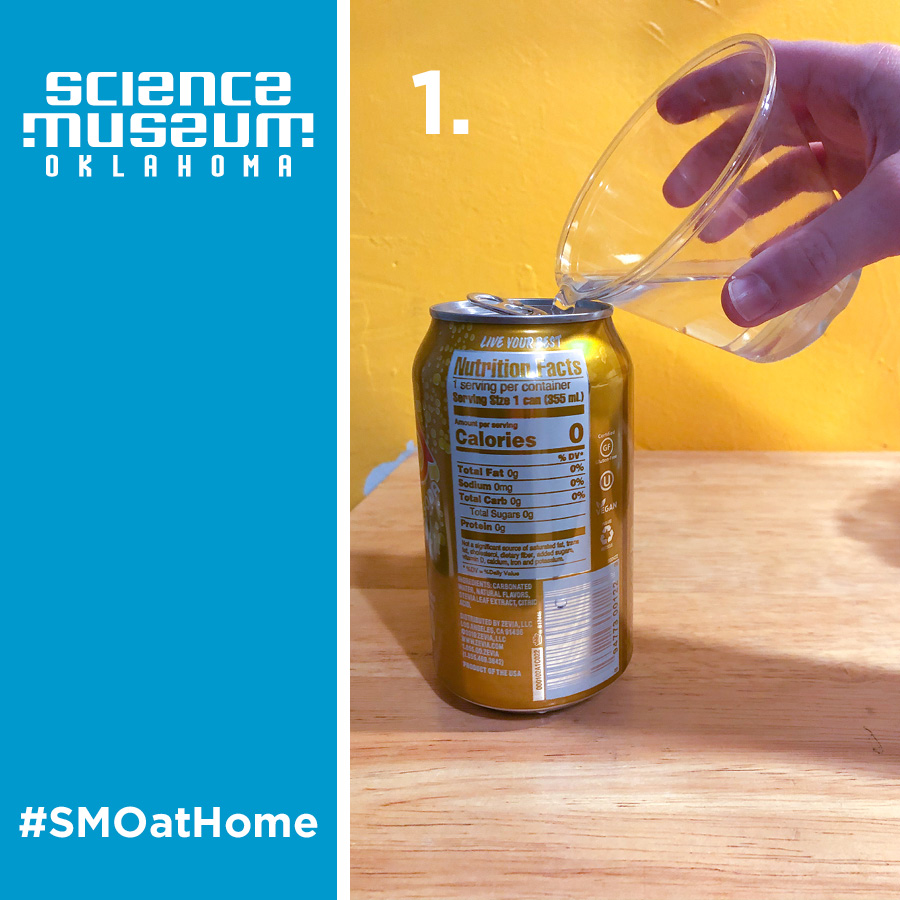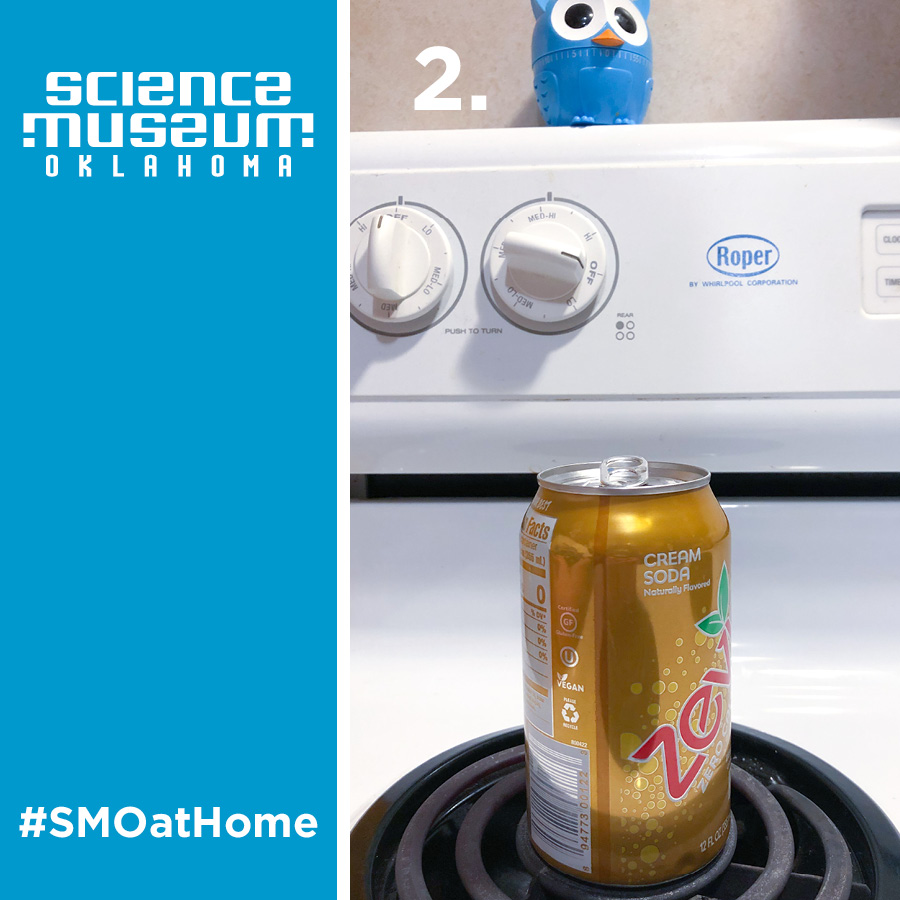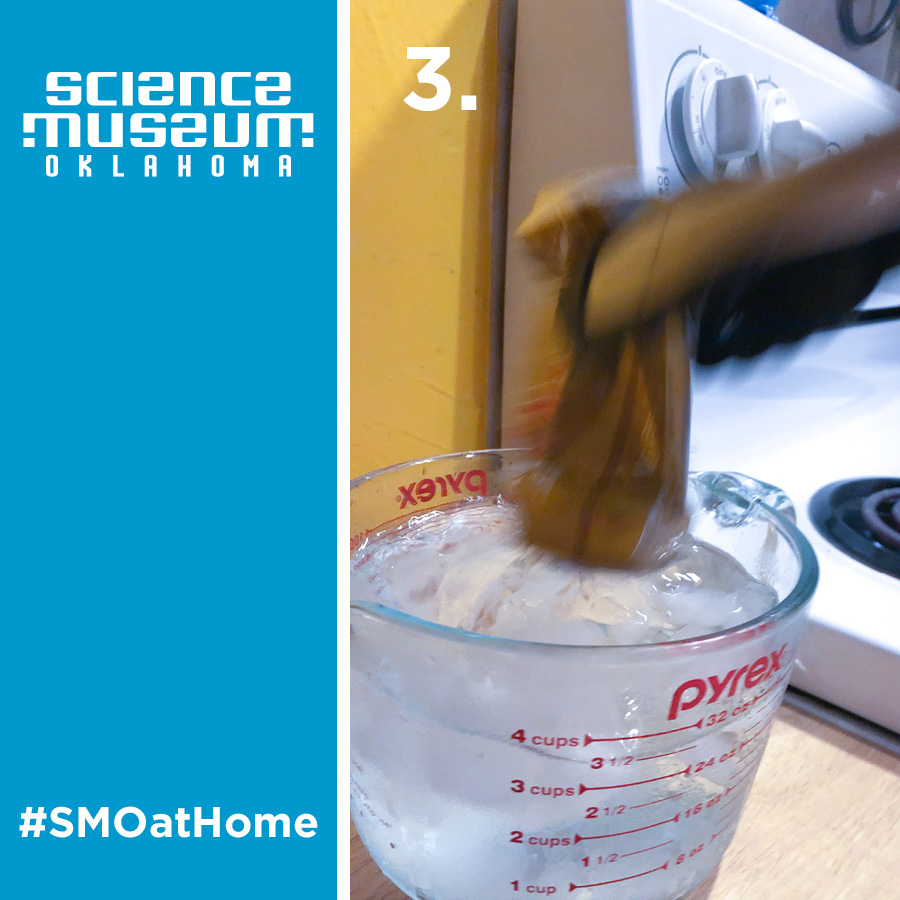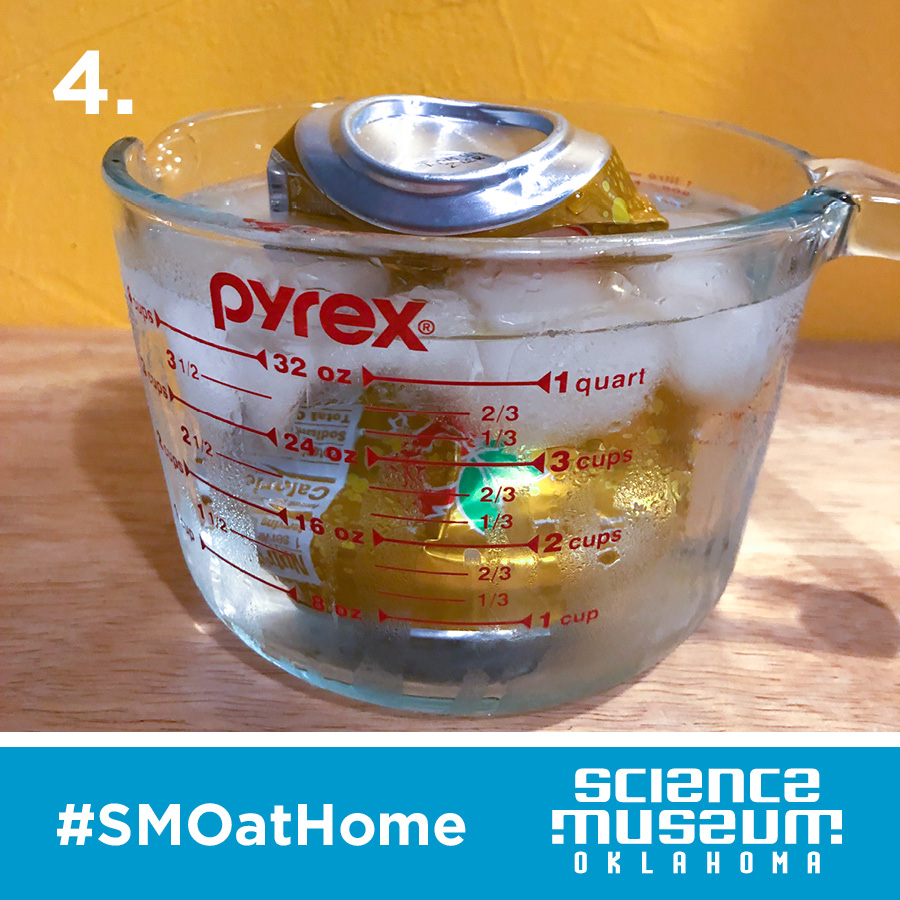Try This: Implode a Can
Atmospheric pressure is the amount of pressure exerted by Earth’s atmosphere at any given point. We sometimes refer to it as barometric pressure. If you’ve built a barometer you may have already discovered that high-pressure systems are associated mostly with clear skies. Low-pressure systems are associated with wind, clouds, and even precipitation. By using air pressure to crush a can, we can investigate why this is!
Here’s what you need:
- An empty aluminum can
- Water
- Tongs
- A bowl or large container of icy cold water
- A stove to, some way to heat the can
- Eye protection and the help of an adult
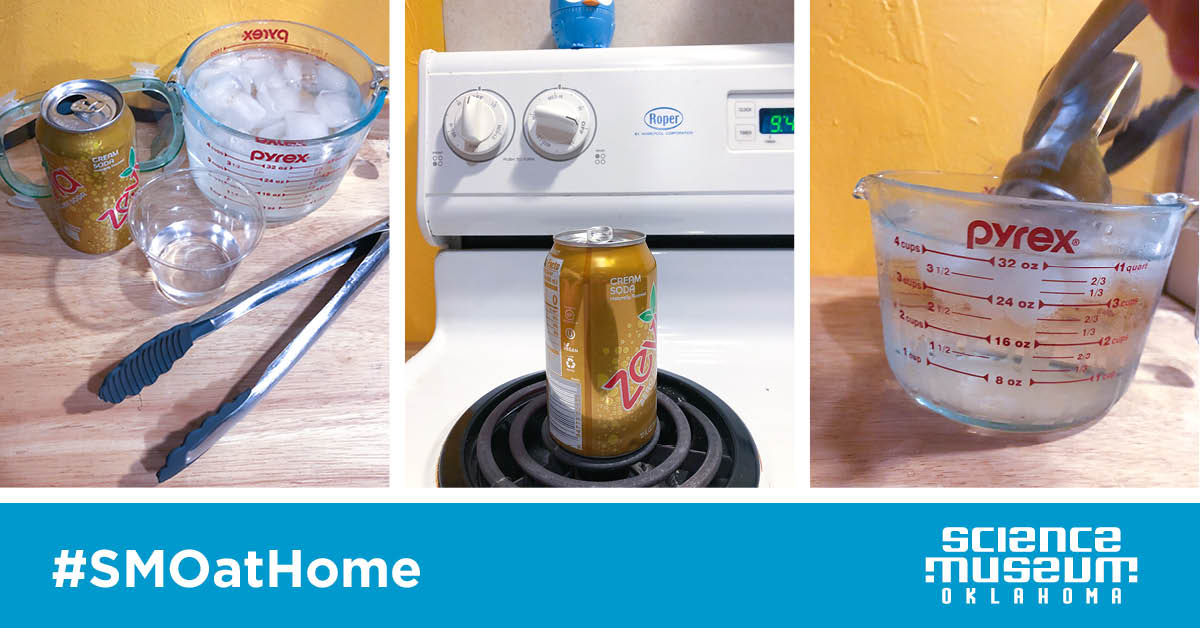
Here’s what to do:
1. Pour a small amount of water into the aluminum can.
2. Heat the aluminum over the stovetop. We recommend medium-high.
3. Observe the can. When steam begins streaming out to the top of the can, use the tongs to move the can over to the bowl of icy, cold water. Carefully, but quickly dip the can opening side down into the water.
Did the can crush? Why did this happen?
What's happening:
When you put water into the can, the water pushed out some of the air that was in the can. When you heated the can, the water inside turned to water vapor and began pushing on all sides of the can and eventually escaping. When the can was moved to the cold water and submerged, the water vapor inside condensed and no longer pushed on the walls of the can.
The higher pressure system around it rushed in to fill the space. This is similar to how air masses from high pressure systems rush into low pressure systems. When hot air moves up, it creates an area of low pressure, the surrounding high pressure rushes in to fill the space. This rushing mass brings wind. The air moving up brings moisture that can make clouds and cause rain.





